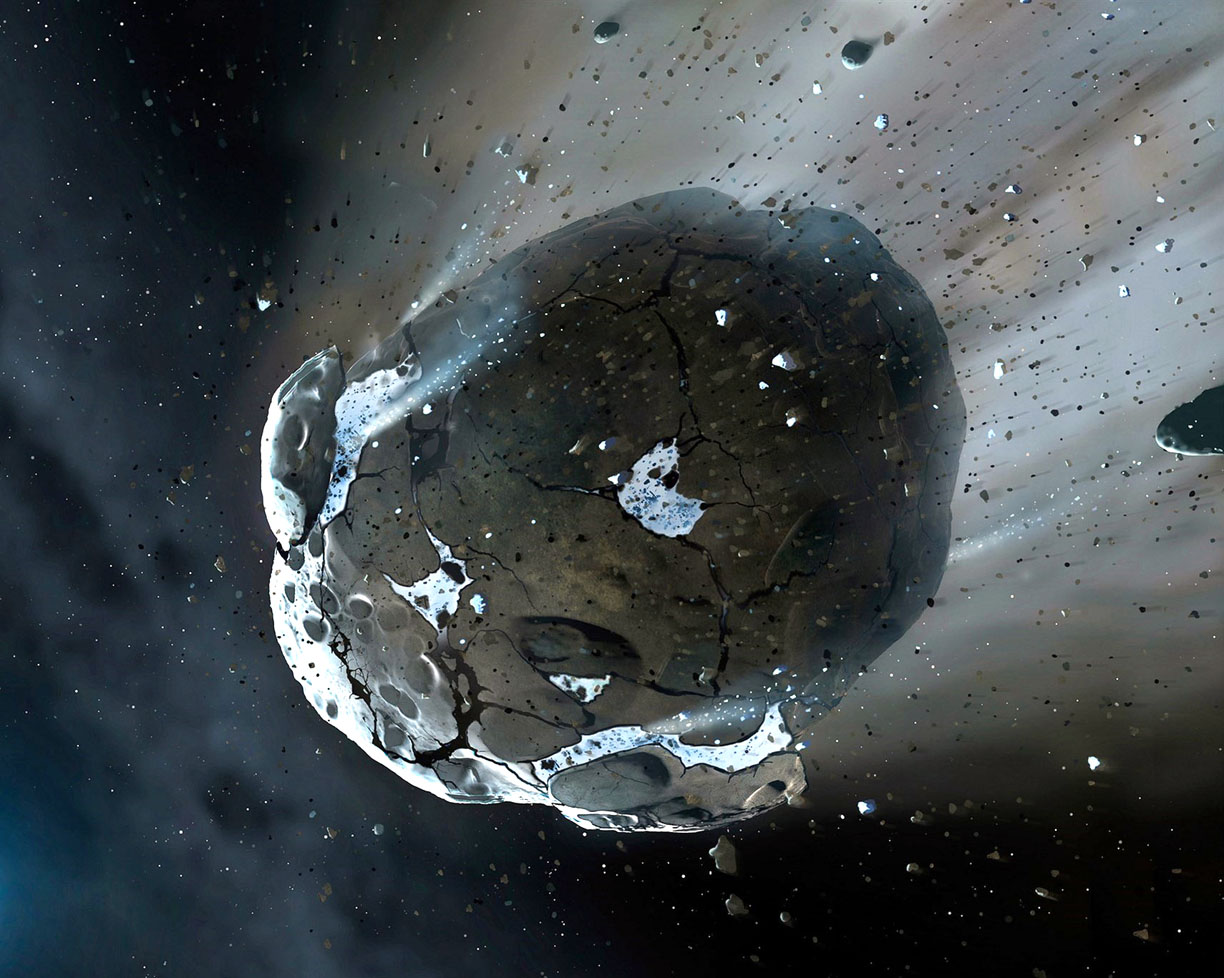Parker Solar Probe data offers new insight on the puzzle of how debris from an asteroid produces one of the brightest annual meteor showers.

Astronomers have long associated meteor showers with comets — as Earth crosses the path of comets, debris left in their wake burns up in our atmosphere. Yet the December Geminid meteor shower has long been a problem.
The Geminids are among the brightest annual meteor showers, known even to casual observers. Yet astronomers found no match to them until 1983, when Fred Whipple (Harvard College Observatory) noted that the orbit of asteroid 3200 Phaethon — discovered by the Infrared Astronomical Satellite — closely matched that of the Geminids. Yet despite an eccentric, comet-like trajectory that takes it from the main asteroid belt to inside Mercury’s orbit, Phaethon didn’t appear to vent gas as comets do when they approach the Sun. Nevertheless, the so-called “rock comet” later did exhibit a dust tail when it passed near the Sun.
Jamey Szalay (Princeton University) learned about the Geminid problem while working on data from the dust instrument carried by NASA’s Lunar Atmosphere Dust and Environment Explorer (LADEE). Micrometeoroids that hit the Moon kicked up dust that reached the instrument as the low-flying orbiter circled the Moon, adding to the signal from the meteor shower that hit the LADEE spacecraft directly. “The strongest signals we ever measured on the instrument came from the Geminid meteor shower,” Szalay explains.
Phaethon is one of a small and very unusual class of objects called “active asteroids.” No others have been linked to meteor showers, and none have been observed losing mass anywhere near Earth’s orbit. However, David Jewitt and Jing Li (both at University of California, LA) observed evidence of a comet-like tail on Phaethon in 2009 when it was near perihelion, only 0.14 astronomical unit from the sun. They estimated the asteroid could be ejecting up to 3 kilograms per second of micron-size particles — about a shovelful per second. That wasn't much, but it did show some emission was possible in extreme heat.
Looking for other opportunities to sample Geminid meteors, Szalay turned to NASA’s Parker Solar Probe. Launched on August 12, 2018, for close-up studies of the Sun, Parker lacks an instrument to detect dust directly. But Parker offers an unintended way to detect dust particles indirectly, by their electrical interactions with the spacecraft's exterior. “When a dust particle hits the spacecraft, it produces a transient spike in its [electrical] charge, which we can use to tell how much dust is hitting us and where,” Szalay says.
His interest piqued, Szalay enlisted the help of undergraduate student Wolf Cukier (also at Princeton) in the summer of 2020. Stuck at home because of COVID, Cukier was looking for an interesting project to do during the pandemic. As others collected and analyzed data, Cukier focused on developing a model of the Geminid stream. “We wanted to explain what was going on with the Parker observations,” says Cukier. Szalay and Cukier published their study in the June issue of The Planetary Science Journal.
Prior Parker data had shown that the dust around Parker comes from two main external sources: dust from the inner zodiacal cloud, which is in the plane of the solar system, and debris from the Geminid meteoroid stream. In fact, white-light observations from Parker showed that the core of the Geminid stream actually lies outside Phaethon’s orbit.
Cukier modeled the stream’s history to see what would have made it shift away from the parent body producing it. What the model shows, Cukier says, “is that a lot of particles needed to be released in a very short time, implying something transient and violent occurred sometime about 2,000 years ago, in the days of the Roman Empire.” The model assumes that those particles have since spread along the asteroid's orbit to become the Geminids, which have gradually been depleted since then.
Cukier says the amount of mass released was at least comparable to Phaethon, which is roughly 6.1 by 4.4 kilometers in size. So the original object may have been twice the current mass as Phaethon, or perhaps much larger. Or a larger original body could even have split into multiple pieces, one of which was Phaethon. The timing of the event is uncertain; it could have happened anywhere from 1,500 to 10,000 years ago.
Jewett, who was not involved in the study, says, “They have done an interesting model, but collisions like that are rare even in the asteroid belt." He therefore thinks such an event is unlikely to have happened such a short time ago. A more probable catastrophe, he suggests, might have been a rotational instability that spun the asteroid up to the point that gravity could no longer hold it together. Phaethon’s rotation period is now a relatively fast 3.6 hours.
With Japan talking of sending the probe DESTINY+ to fly by Phaethon in the near future, we may be able to get close enough to see if the asteroid has any cracks that reveal its past.
 0
0









Comments
You must be logged in to post a comment.